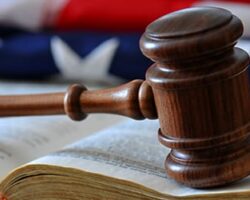Campus Speech Codes
Synopsis
Beginning in the late 1980s, colleges and universities around the country began to institute policies aiming to protect students from offensive and harassing speech. Most of the policies included restrictions on speech that the Supreme Court would not permit of federal or state government. While the legal right of private schools to adopt such policies is for the most part undisputed, the enactment of speech codes in public universities is a matter of continuing controversy. While no case has gone to the Supreme Court, a federal district court struck down a speech code at the University of Michigan as early as 1989, and since then speech code challenges have been consistently successful in lower courts. Despite the uniformity of case law, speech codes have continued to proliferate in various forms, and have continued to generate controversy. Aside from the legal question of the constitutionality of speech codes in public universities, the presence of such policies even in private schools has raised the objection that institutions of higher education ought to be committed to freedom of speech in an even broader sense than that of the First Amendment.
Spotlight Speech Codes Database, FIRE
The Foundation for Individual Rights in Education (FIRE) hosts this database of speech codes on college and university campuses throughout the country. Its user-friendly interface allows you easily to locate relevant campus policies at the institution of your choosing. It categorizes these into “red light,” “yellow light,” and “green light” policies based on the degree to which they restrict speech beyond First Amendment limitations.
Click here to use the Spotlight Database.
“Resolved: Freedom of Speech is in Danger on American Campuses.” Firing Line Debate, 1991.
Majeed, Azhar. “Defying the Constitution: The Rise, Persistence, And Prevalence Of Campus Speech Codes.” Georgetown Journal of Law & Public Policy 7, No. 2 (2009).
Read the full article at FIRE.
Delfattore, Joan. Knowledge in the Making: Academic Freedom and Free Speech in America’s Schools and Universities. New Have: Yale University Press, 2010: 56-84.
Find it on JSTOR (restricted access).
Gilreath, Shannon. “Tell Your Faggot Friend He Owes Me $500 for My Broken Hand’: Thoughts on a Substantive Equality Theory of Free Speech.” Wake Forest Law Review 44 (2009): 101-159.
From the abstract: “With two recent decisions in what is being referred to as the T-shirt Wars, Harper v. Poway Unified School District and Nuxoll v. Indian Prairie School District, as operational vehicles, this article explores what I term anti-identity speech and its effects on its targets. … Through an extended analogy between contemporary anti-Gay rhetoric in the United States and anti-Semitic saturation propaganda in Nazi Germany, I show why and how anti-identity speech must be subject to reasonable regulation. While focused largely on the public grade school setting, the arguments presented here are relevant to numerous situations in which the conceptual liquidation of the person is effectuated by speech or expression that then finds refuge in the First Amendment. As such, my arguments are relevant to anti-harassment laws, anti-bullying laws, and anti-hate speech laws.”
Find it at SSRN’s online Research Library.
“The State of Campus Free Speech.” We the People, National Constitution Center Podcast
“The First Amendment and Hate Speech,” We the People, National Constitution Center Podcast
Keith Whittington and Shannon Gilreath discuss Harper v. Poway beginning at 10:44.
“The First Amendment and racist speech on college campuses.” We the People, National Constitution Center Podcast
“The First Amendment speech debate on college campuses.” We the People, National Constitution Center Podcast




